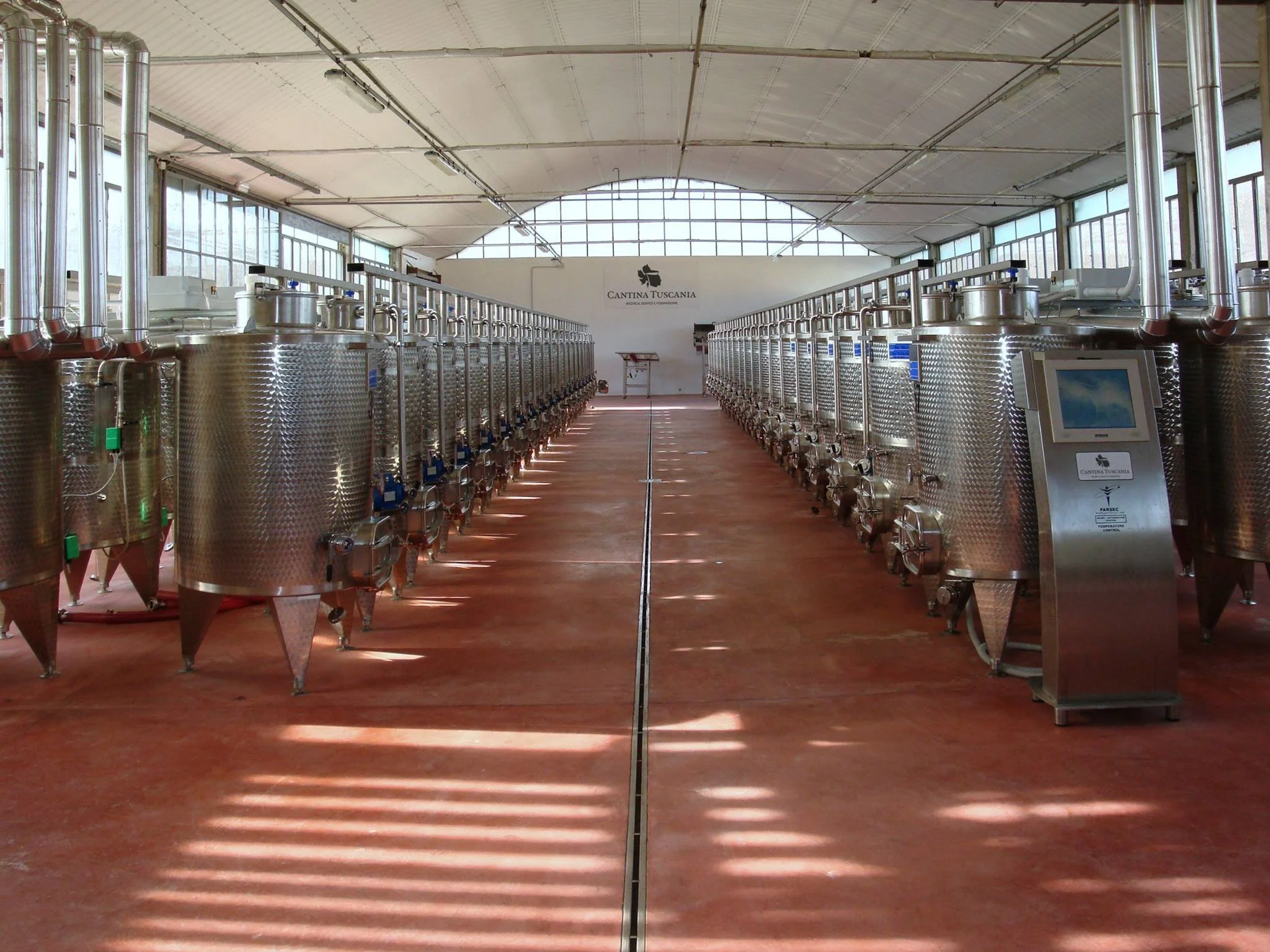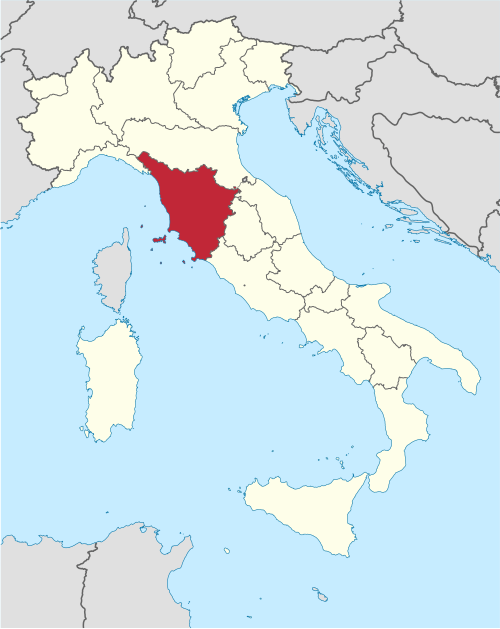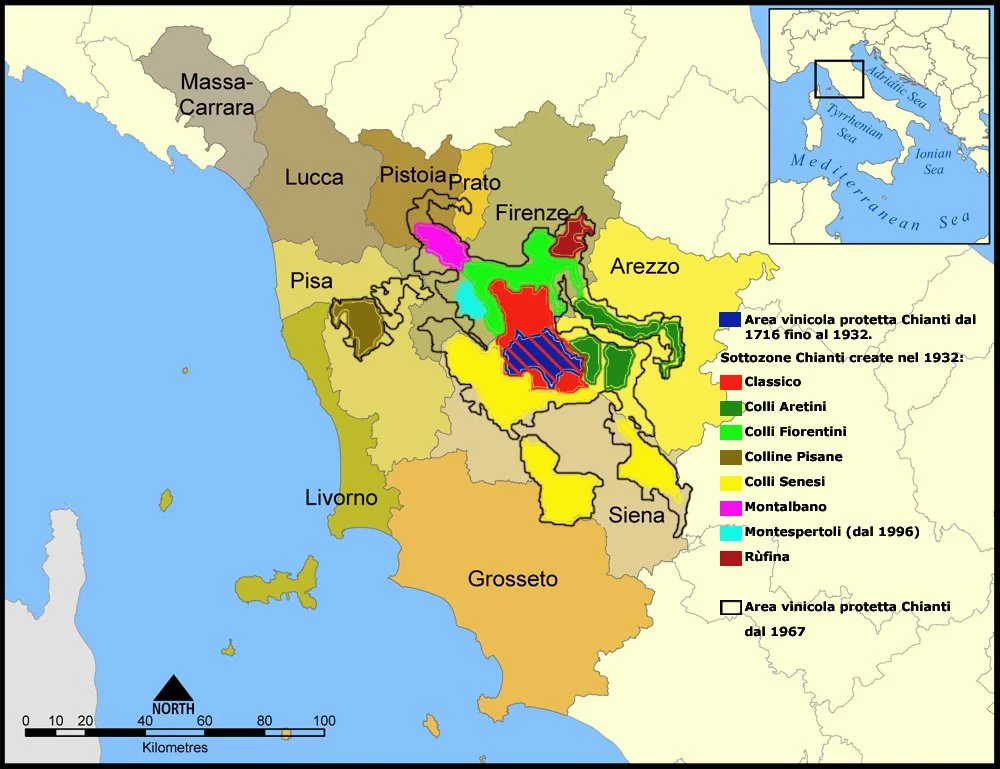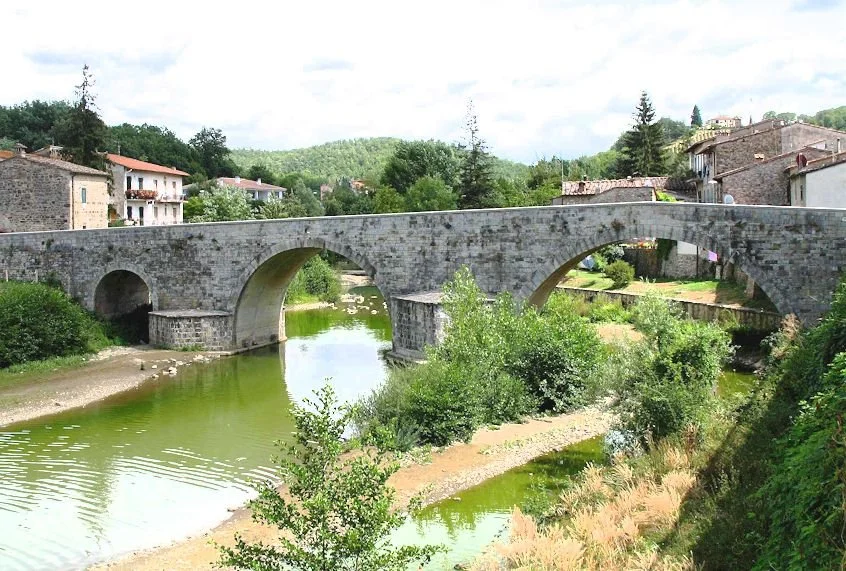Italy > Tuscany > Chianti > Cantina Tuscania
Organic
Tuscany & the chianti district
Tuscany, one of the seats of Italian civilization, occupies the lands to the north of Rome on the Ligurian Sea, and includes the capital city of Florence, the famed cities of Grosseto, Lucca, Pisa, and Siena, and the major port city of Livorno.
The history of Tuscany is the history of Italy. Originally settled by the Etruscans (from whom the name), then conquered by Rome, then by the Ostrogoths, the Lombards, and the Carolingians, it rose to prominence as a Grand Duchy in the Middle Ages and, under the Medici, sparked the Italian Renaissance. The Grand Duchy was abolished by Napoleon, restored after his exile, and eventually in 1860 incorporated into the growing Kingdom of Italy.
Eight Tuscan localities have been designated UNESCO World Heritage Sites: the historic Centre of Florence (1982); the Cathedral square of Pisa (1987); the historical centre of San Gimignano (1990); the historical centre of Siena (1995); the historical centre of Pienza (1996); the Val d'Orcia (2004), the Medici Villas and Gardens (2013), and Montecatini Terme (2021).
Sprawling across the center of Tuscany is the Chianti district. First delimited in the 13th century as the lands around the villages of Gaiole in Chianti, Radda in Chianti and Castellina in Chianti, the district was further codified by an edict of Grand Duke of Tuscany Cosimo III di Medici in 1716 - the world’s first legal delimitation of a wine production area. The defined region drapes across the provinces of Firenze, Siena and Arezzo. In 1932, the core “Classico” district was defined, centered upon the original boundary of 1716. The protected Denominazione was finalized (ish) in 1967, and today the Chianti district includes some eight subzones, including Classico, Colli Arentini, Colline Senese, Chianti Rufina, and others.
To further complicate matters, the Chianti Classico DOCG (established 1996) is further divided into subzones (currently eight, in 2027 that changes to eleven). These Unitá geografiche aggiuntive (“additional geographical units” or UGAs) are only allowed for the new Gran Selezione level of Chianti Classico.
UGA’s within Chianti Classico
cantina tuscania
“[Cantina Tuscania’s] experimental center represents one of the largest and best equipped centers in the world.”
The winery was founded in 2008 as an experimental center for wine and wine research on the initiative of several important Chianti Classico producers gathered together as Consorzio Tuscania. Supported by PARSEC SRL technology, a Florentine company known internationally as the reference vanguard in the development of the most advanced technologies and innovative and effective solutions to improve the wine production process, PARSEC’s facilities are some the most advanced in the world.
“...one of the most unique projects in Tuscan wine.”
Located in the village of Sambuca-Tavernelle just south of Florence, Cantina Tuscania Srl was founded in 2015 following PARSEC SRL's acquisition of the then Consorzio Tuscania, which primarily focused on Sangiovese experimentation and research. Since then, thanks to PARSEC's growing investments, Cantina Tuscania's core business has become winemaking. In addition to contract winemaking, in 2016 it launched its own line of wines, produced from organically managed vineyards and using only indigenous varietals. Tuscania's rapid growth has resulted in the winery now operating 312 tanks of various sizes and materials as they continue their research projects and experimentation into perfecting the art of Tuscan winemaking.
Lazzerini- The Ponte Vecchio, Firenze
The winery also supports the local community and tuscan culture in many ways. The winery’s label artwork is specially commissioned from famed Tuscan artist Paolo Lazzerini, and evokes views of the Tuscan landscape through a lens of childlike wonder.
Lazzerini- unknown work. credit
The wines
Toscano Rosso Sangiovese “Pleni Lune” - 100% Sangiovse, hand harvest, fermented in stainless then aged in oak for 6 months prior to bottling. Micro-oxygenated to round out the acidity and tannins and allow development of the fruit aromas. Bright and focussed, with good acidity and spice notes.
Toscano Rosso Pugnitello - 100% Pugnitello, hand harvested from a vineyard in the village of Grosseto. Pugnitello translates to “little fist” which references the variety’s small clusters and thick-skinned grapes. Primary and Malolactic fermentations both in oak barriques, followed by 8 months of maturation in oak before bottling. Deep purple in color. Deep and structured with fine tannins and a long, persistent finish.
Toscano Rosso Foglia Tonda: 100% Foglia Tonda. This rare autochthonous grape variety produces a deep ruby red wine with bright acidity and structural tannins. A bit rounder on the palate than sangiovese, and only rarely produced as a pure varietal wine. Fermentation and malo in oak, then 8 months ageing in wood before bottling.
Chianti DOCG “Testa Per Aria” - 100% Sangiovese, hand harvested, fermented in stainless with controlled micro-oxygenation. 6 months bottle age before release. Bright and fresh- classic Sangiovese.
Chianti Classico DOCG: 100% Sangiovese, hand harvested from certified organic vineyards. Fermentation and malo in stainless, then aging in 2-3 year French oak for 18 months before final blending in stainless, then bottling. Elegant and complex nose of cedar and red fruits, followed by a palate of power and depth. Good acids and rounded tannins lead into a clean but persistent finish.
Chianti Classico Riserva DOCG
The Ponte Ramagliano, a Roman-era bridge over the Pesa River at Sambuca-Tavernelle; as widened in 1415.









